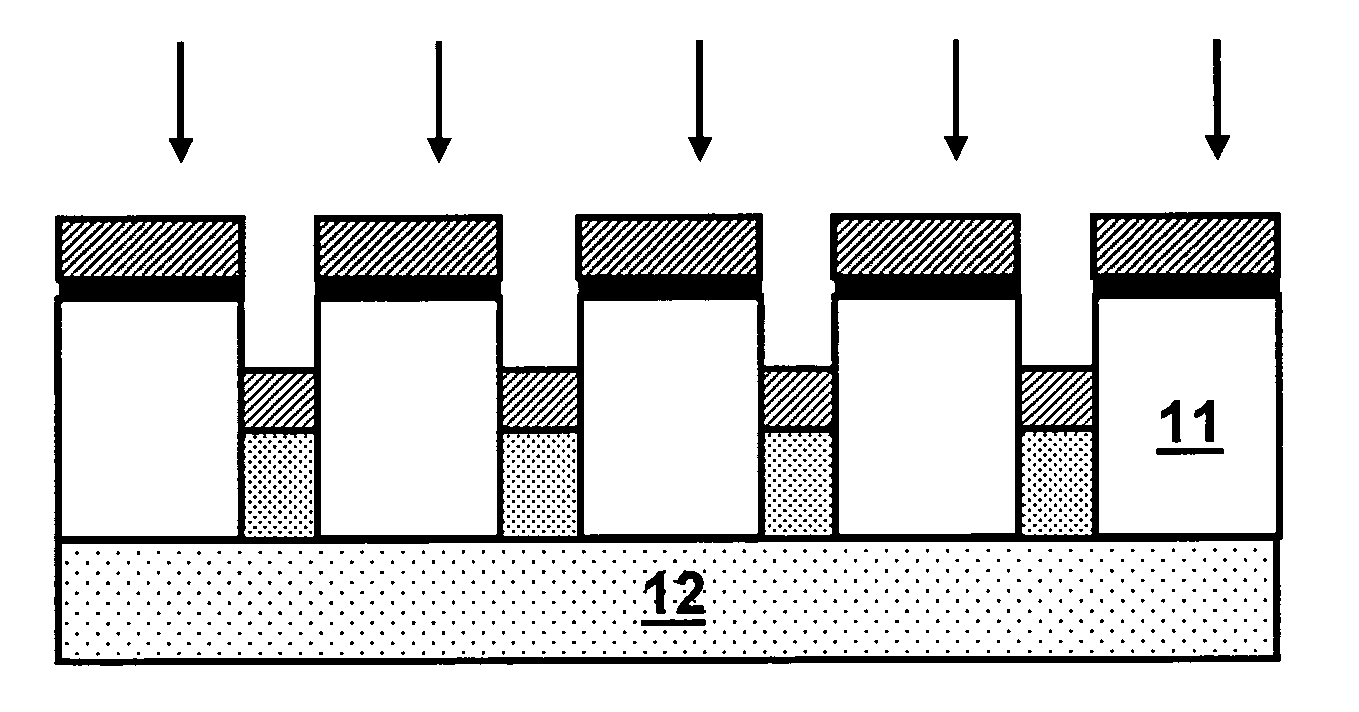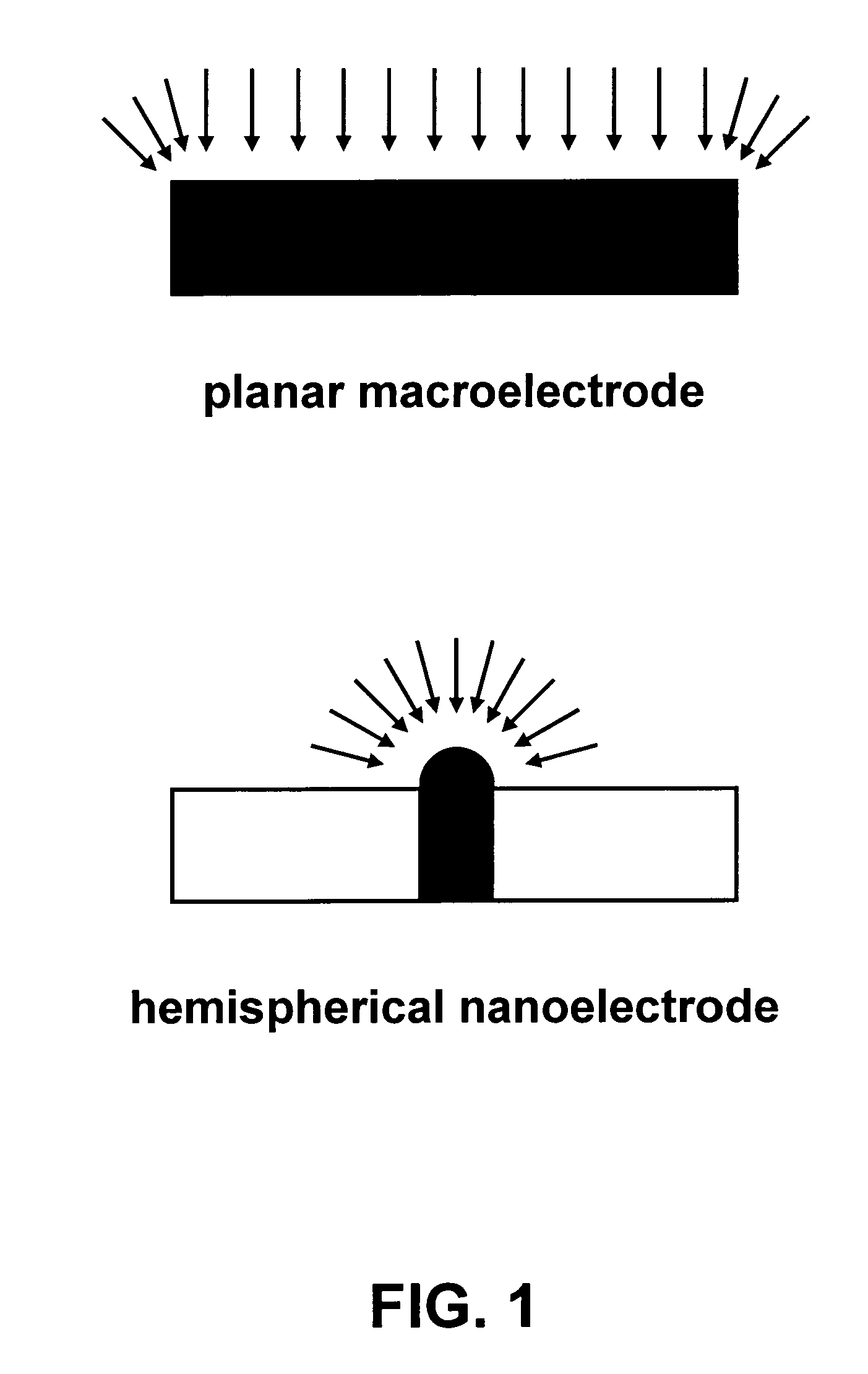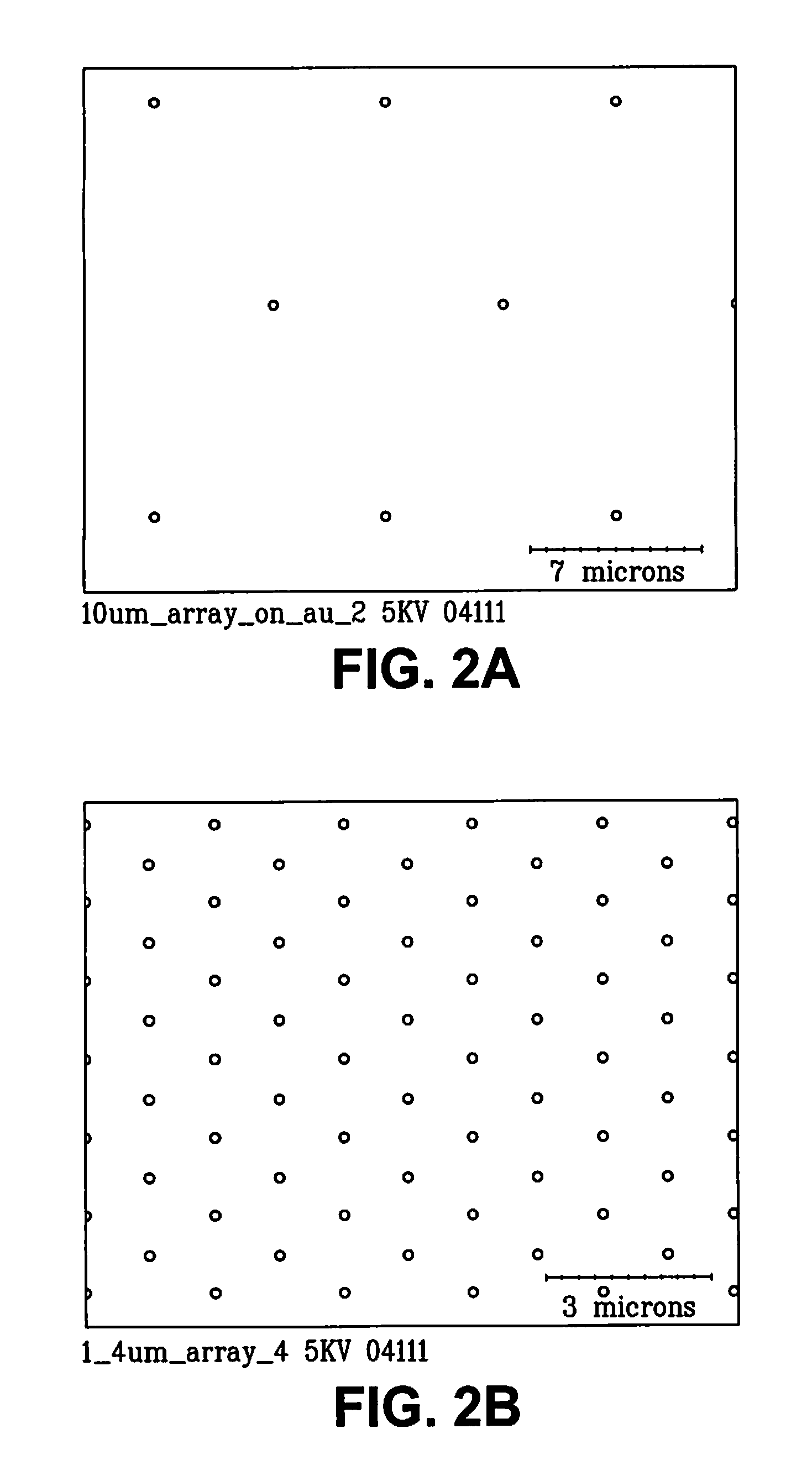Nanoelectrode array for electrochemical analysis
- Summary
- Abstract
- Description
- Claims
- Application Information
AI Technical Summary
Benefits of technology
Problems solved by technology
Method used
Image
Examples
Embodiment Construction
[0015]Shown in FIG. 1 is electrochemical diffusion to a planar macroelectrode. In general, the sensitivity of an electrochemical planar electrode is proportional to the diffusion-limited current density id after application of a step potential, according to
[0016]id=nFDCδsuchthatδ=(πDt)1 / 2(1)
where n represents the number of electrons transferred in the electrochemical reaction, F is Faraday's constant, D is the diffusion coefficient of the electroactive species, C is the bulk concentration of the species in the solution far from the electrode, and δ is the Nernst diffusion layer thickness that develops away from the electrode when current flows. Thus, the diffusion-limited current density id decreases with the square of time t as the Nernst diffusion layer thickness develops and goes to zero for long times (in reality, mass transport by natural convection will become significant at a finite diffusion layer thickness, e.g., 10 μm). Efficient agitation and fast transient meas...
PUM
| Property | Measurement | Unit |
|---|---|---|
| Length | aaaaa | aaaaa |
| Nanoscale particle size | aaaaa | aaaaa |
| Electrical conductivity | aaaaa | aaaaa |
Abstract
Description
Claims
Application Information
 Login to View More
Login to View More - R&D
- Intellectual Property
- Life Sciences
- Materials
- Tech Scout
- Unparalleled Data Quality
- Higher Quality Content
- 60% Fewer Hallucinations
Browse by: Latest US Patents, China's latest patents, Technical Efficacy Thesaurus, Application Domain, Technology Topic, Popular Technical Reports.
© 2025 PatSnap. All rights reserved.Legal|Privacy policy|Modern Slavery Act Transparency Statement|Sitemap|About US| Contact US: help@patsnap.com



